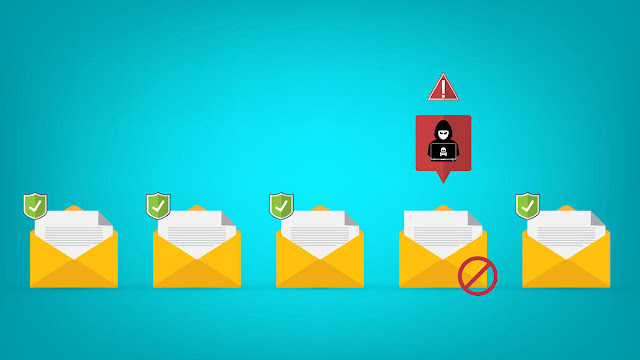- Get link
- X
- Other Apps
- Get link
- X
- Other Apps
You know it: In the inbox of the mailbox there is an email with a link from banks, PayPal or eBay from known or unknown senders with the subject "New Terms and Conditions", "Last Reminder", "Current Account Information" or similar and waits on opening. E-mail providers usually, filter out the majority of fraudulent e-mails using the spam filter, but now and then e-mails with such a subject go through.
Initially, the providers were noticed by their poor German, but beware: the
fraudsters are getting more and more cunning. The email pretends to come
from the person's bank and claims that for security reasons it is necessary for
the customer to visit the bank's website via a link and register there with an
account number, PIN, and one or two TANs.
This fraudulent strategy is known as "phishing". The term
describes the effort to fish for passwords, log-in data, PIN, TAN via fake
e-mails, websites, or short messages, and to use these access data fraudulently
against you without your knowledge. Prerequisite: good faith of the
victim.
How Do I Recognize Phishing Emails and How Do I Deal with Them?
·
No exclusion about the existing / non-existing
personalization. "Dear Ms. / Dear Mr. ..." - the personalization of the
salutation is no guarantee that the e-mail will come from a
reputable provider or even a provider you know. Often large amounts of
data are hacked, stolen, and then misused for illegal actions and transactions
or generated from the target email. Pay attention to the further content
and the design of the e-mail (see below)
·
Not through the name of a service provider known to you. Even if you know the
company that is (supposedly) sending you an email - your personal information
could have been stolen. Pay attention to the further content and the
design of the e-mail (see below)
·
Examination of corporate design and language. Often you can recognize
phishing emails by the simple, false, or inferiorly imitated corporate design of
the original service provider or the unprofessional customer approach. For example, well-known brands, and providers can be "imitated" via
websites.
Be Attentive and Remember How Banks and Other Service Providers
Operate
Remember: your bank, savings bank, or other service providers such
as Deutsche Telekom, PayPal, and eBay would never send you e-mails with a link,
redirects, and attachments without your consent or unsolicited. If you have
received an email from your existing service provider and are skeptical, call
them and ask whether an email has been sent to you and whether it is harmless. Alternatively:
Type in a search for the address of the bank manually in the browser and check
whether there is a reference to the corresponding content of the mail or
downloads. Also, financial service providers offer special
financial transaction software for online banking.
If you make purchases or online banking via the web, the URL of the portal
should always include HTTPS: // - this is the most important security notice. To be
completely sure that the site is secure, you should still check whether
the SSL client security certificate is
correct. It is easy to manipulate and consists of MD5, SHA-256, or SHA1 checksums. Another note
concerns the closed padlock that is most often seen when a user visits their online banking
website. This means that the browser signals an encrypted connection.
But the above stop is not enough if you are not using antivirus software to secure your data.

Comments
Post a Comment